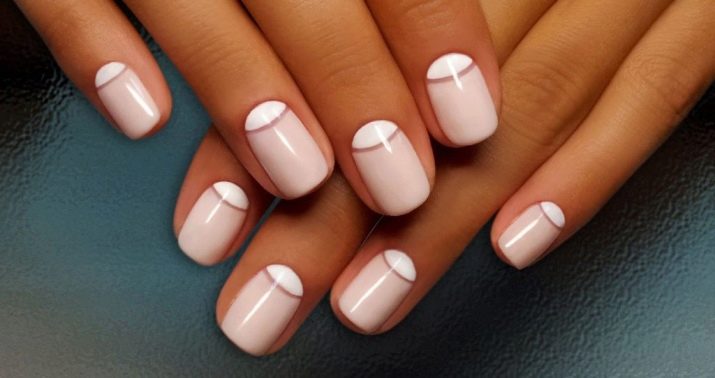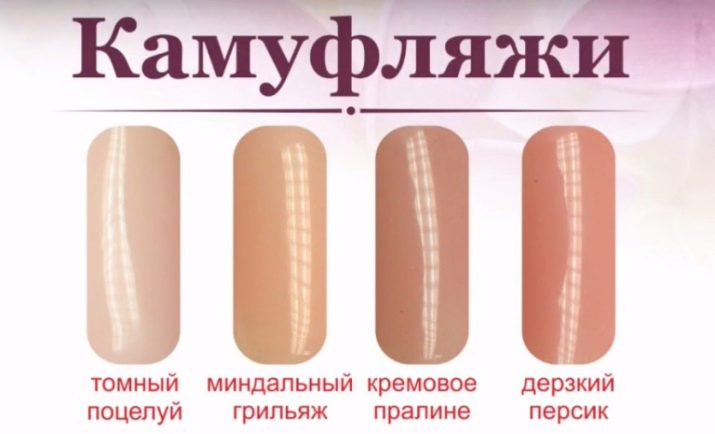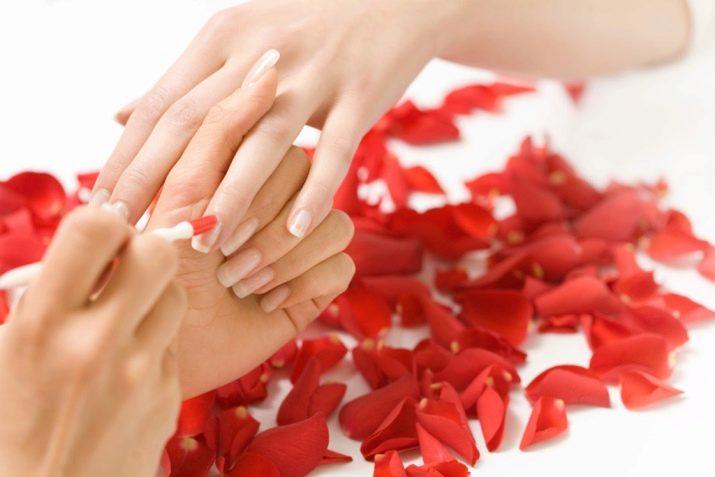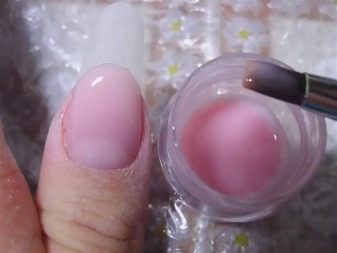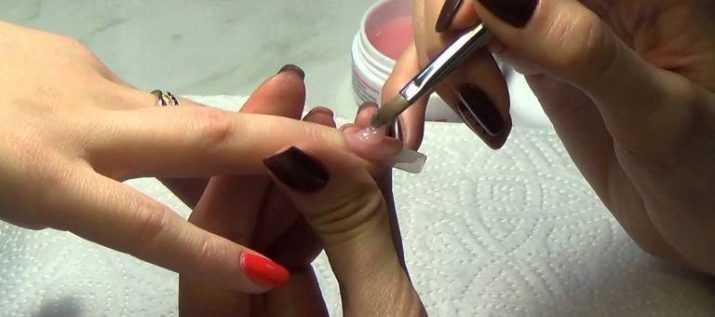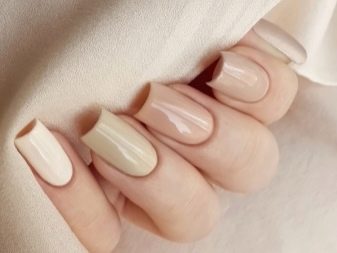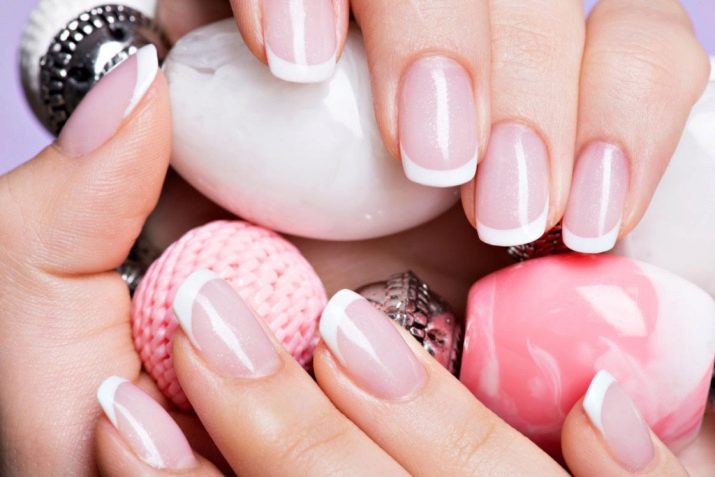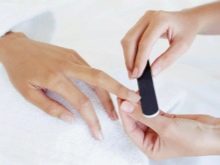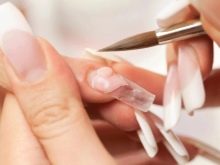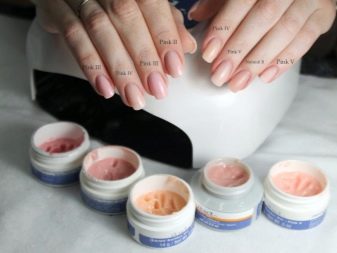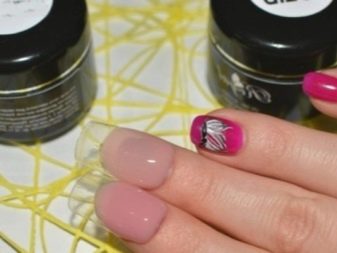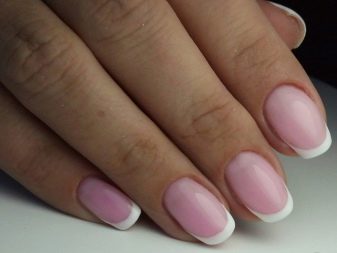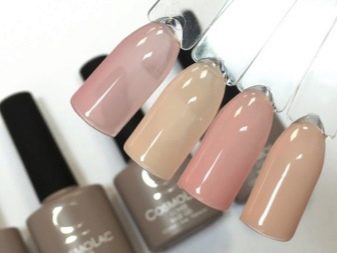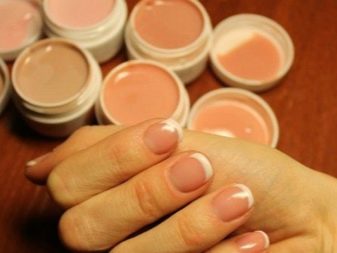Camouflage gel varnish: features of choice and use
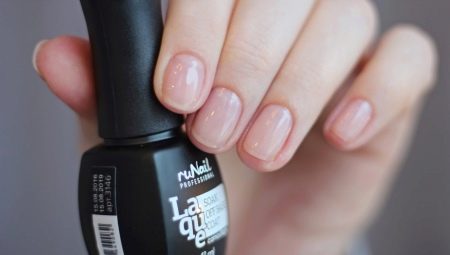
Camouflage gel polish appeared on the market "nail" products recently. Just 7 years ago, acrylic or gel was used for nail extensions. Nowadays, natural beauty is in fashion, therefore, creating a nude manicure, nails are strengthened and lengthened with the help of a base.
Natural shades are universal and relevant, suitable for any dress code and almost indistinguishable from the natural color of nails. This is an ideal solution for thin and exfoliated nail plates. The beauty industry is developing, and now camouflage bases of various types and purposes can be found on the market.
Coverage Features
When using such a manicure nails get access to oxygen, despite the fact that they are covered with an artificial base. This allows you to wear a manicure for a long time, without fear for the structure and quality of native nails.
Another uniqueness lies in the fact that externally camouflage looks almost imperceptible. The shade of the base is matched to the color of the skin or nail.
The formula of gels has a beneficial effect on the structure of the nail plate, avoiding the so-called rest time, when the nails need to be allowed to relax, making pauses in the building.
Gel color
Beige, pink and peach tones of camouflaging bases are recommended to owners of dark skin. For light-skinned, translucent tones in a pink palette are better suited, for example, the Laque base would be an excellent option. The palette of gels allows you to get different shades from ivory to dark beige due to the density and density of the consistency of the material.
The most popular method of using camouflage gel is to create a classic french. To date, a “smile” is drawn using color gels or makes it several tones darker than the base, creating a light ombre effect.
Camouflaging bases are presented in a wide color neutral spectrum, so choosing something to your taste is not difficult.
Advantages and disadvantages
The camouflaging gel protects the nail plate from mechanical effects, fungal diseases, strengthens and allows them to breathe, the nails acquire a specular glow. The polymer coating is worn for a long time and safely affects the health of the nails. Camouflage gel allows you to remove cracks and give nails any shape.
Camouflage base is ideal when using slightly pigmented light varnishes. It creates an excellent substrate for the subsequent color, as well as for rubbing, which saves time.
However, this product is not without flaws.
- Allergic reactions. If a person is prone to allergies, then this type of manicure is better to refuse.
- If the gel is used improperly, there is a possibility of damage to the nail plate. Improper use of a UV llama can lead to microburns, since the gel during polymerization is very hot in the first few seconds.
- When removing the horny plate can be damaged if the procedure for removing the accumulated layer is not made by technology.
- If the nail is broken and chips and cracks appear on its surface, it is necessary to “repair” the nail, otherwise, due to a sufficiently strong coating, the natural nail may suffer due to separation, and this will lead to pain.
- Correction. Artificial nails should be repacked every 2–3 weeks, as the gel is highly pigmented.If this is not done, the outgrown part of the nail becomes clearly visible.
- High price.
Application features
Three phases of combining bases are now available. Each type has its own properties and technology of use. The option is selected from the effect that you want to achieve in manicure.
When designing the camouflage gel using a dark gamut., creating a transition between the nail bed and its free edge. In French manicure, the camouflage gel is used together with the white classic gel, where the “smile” is first laid out and after the polymerization of the light base the nail is covered with camouflage gel.
With pronounced defects of the nail plate and a change in its length, very thick camouflaging bases are used. Thick and dense texture hides all the flaws, evenly smooths the nail and gives it strength.
Types of camouflage gel
Single phase - this manicure "3 in 1". This type works independently as a base, color and fixing coating. It is the easiest way to correct nails and is light in technique. This foundation is as close as possible to the natural appearance of the nails. The gel in the work dries faster than regular varnish. It has a dense texture, malleable in creating any forms on the nails. Enjoys popularity in nude manicure.
There is also a two-phase gel. This manicure in time is longer than a single phase. The consistency of the density is average, which requires two or three layers to be applied to achieve the desired result. Time with this gel from the master takes more. The main feature is that each layer must be thinly applied, otherwise the gel will not be able to completely polymerize in the lamp, which will lead to chipping and material separation from the nail.
Three phase is the application of the base in several layers. This technique is presented in the form of a base, sculptural and finishing gel. The structure of the camouflage is liquid, making it easy to use in layering. Particular attention should be paid to the bubbles in the process of using the base - they should not be. In conclusion, the three-phase base is fixed with a thin layer of a single-phase gel.
The use of gels for other purposes and violation of the technique will lead to short-lived coating.
How to use?
- Prepare your hands for the procedure.
- With a soft buff go over the surface of the plate, sand and remove dust.
- Give the nail the desired shape.
- Take the form for nail and attach it. The center of the form should coincide with the center of the plate of the native nail. Secure the form.
- With a brush, grab a small amount of the product and evenly distribute it over the entire surface of the plate and in shape. It is necessary to observe the indents from the side rollers and from the cuticle so that the gel does not flow beyond the limits of the nail.
- Polymerization in a UV lamp for about 2 minutes.
- Remove the dispersion layer and give the desired shape to the workpiece.
- Remove excess dust.
- Apply camouflage gel polish in several layers, each layer polymerizing in a UV lamp for 2 minutes.
- Remove the form and apply a fixing gel.
The procedure for applying a single-phase gel is performed as a normal manicure for the finished length of the nails. When lengthening the plate forms are used.
Reviews
Reviews about camouflage bases are ambiguous. Most often, women complain of allergic reactions caused by these means. At the slightest violation of technology, there are detachments, cracks and bubbles, which makes the coating short-lived. Sometimes the color of the coating from the same jar of gel turns out to be different in tonality. This is most likely due to the thickness of the applied layers.
Different brands of the texture of the gels are different, and because of its density, it is not always successful to uniformly apply it to the nail. Some bases polymerize in the lamp faster than the time stated by the firm.
From the advantages of the customer emit a color palette and an affordable price that allows you to experiment with designs.
Masters note the remarkable viscosity of the gels when modeling and nails, which facilitates the work. The color palette does not stand out with any special colors. Material consumption is average. Persistence in camouflage gels increased - up to 4 weeks.
From the minuses of the master emit allergic reactions. With frequent use of the mask does not help from the manifestations of allergies. Some firms cannot be bought in a professional shop.
Camouflage gels are an ideal and universal remedy for problematic nails for lovers of nude manicure. With all its shortcomings, these funds have their own fans.
To learn how to make a manicure using camouflage gel polish, see below.

